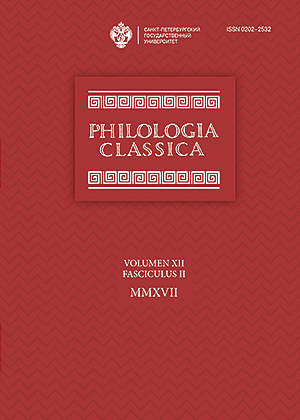An Eastern Tradition in Lullian Blaquerna: the Holy Fool Ramon Lo Foll
DOI:
https://doi.org/10.21638/11701/spbu20.2017.209Abstract
The paper analyzes a passage from the novel Blaquerna written by Ramon Llull from approximately 1276 to 1283. It has not till now received a coherent explanation able to give an account of its literary models. A comparative study shows how Llull treats a theme borrowed from both the Classical and the Christian tradition. The Classical tradition depends mostly on the image of a philosopher, especially one of the Cynical school, blended with the character of Aesop. In the Middle Ages, the theme achieved its final shape through the addition of content and stylistic elements borrowed from Christianity. The closest source available to Llull could be the Life of Symeon of Leontius of Cyprus, an important work as regards the diffusion of the character displayed in the text under consideration.
Keywords:
Ramon Llull, Byzantine tradition, madness, holiness, cynicism
Downloads
References
Downloads
Published
How to Cite
Issue
Section
License
Articles of "Philologia Classica" are open access distributed under the terms of the License Agreement with Saint Petersburg State University, which permits to the authors unrestricted distribution and self-archiving free of charge.






